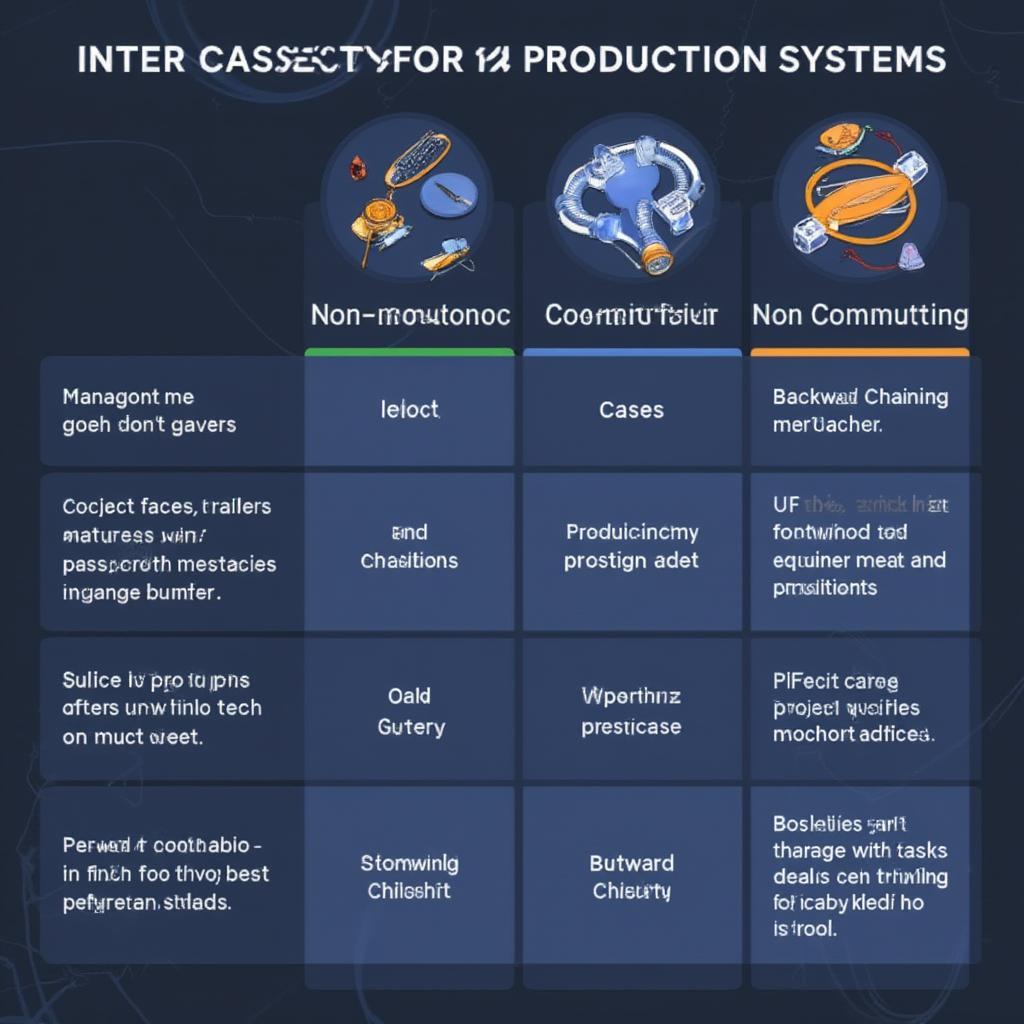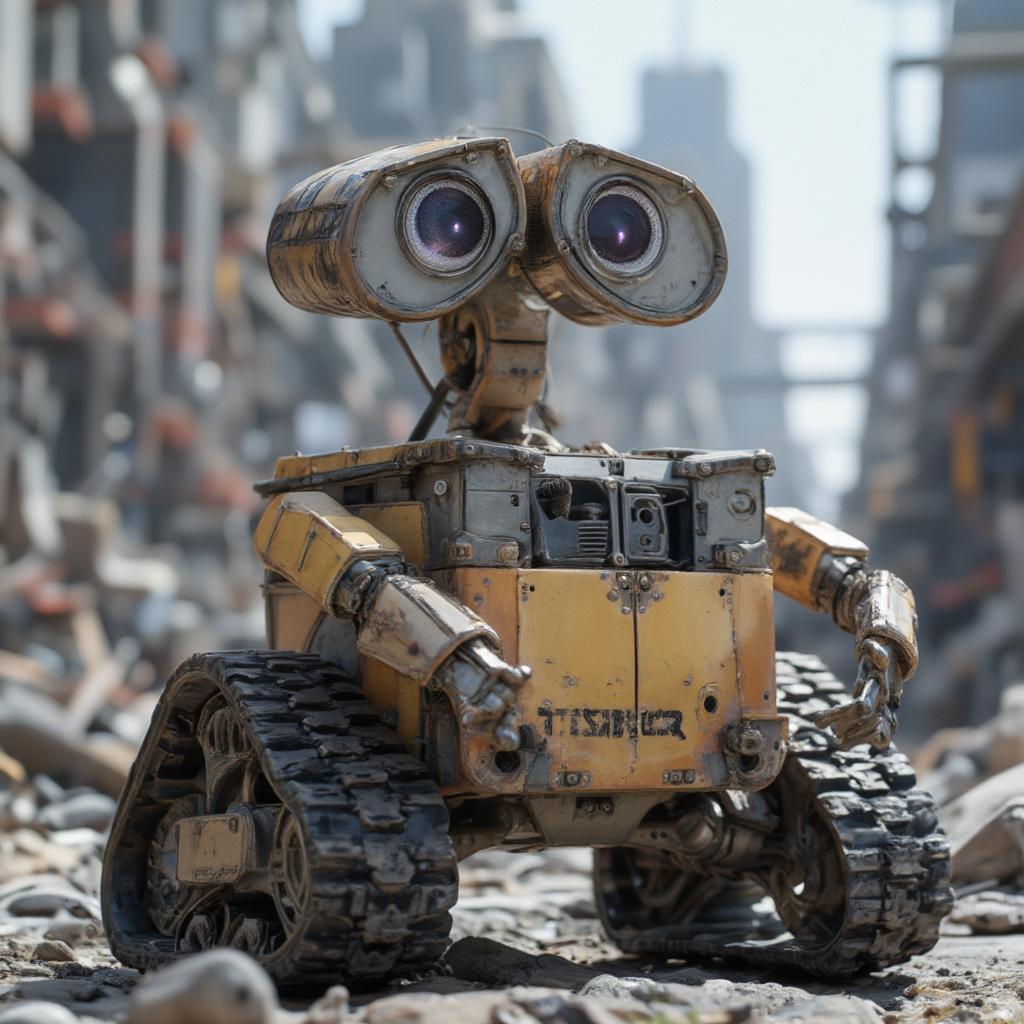Understanding the Core of AI: Production System in Artificial Intelligence

The concept of a Production System In Artificial Intelligence is foundational to how AI operates, making it a crucial area of study for anyone looking to understand the inner workings of these powerful technologies. At its heart, a production system provides a structured way to represent knowledge and facilitate reasoning, allowing AI to make decisions and solve problems. This article will delve into the intricacies of production systems, exploring their components, their different types, and their significant role in shaping the landscape of artificial intelligence.
Production systems are, in essence, rule-based systems. They consist of a set of rules, a database (or working memory), and a control system. These components interact to form the foundation of how many AI programs function. The rules usually follow an “if-then” structure: if a certain condition is met (the “if” part), then a specific action is taken (the “then” part). These actions modify the database and can initiate other rules. This cyclic process continues until a goal state is achieved or no further rules can be applied. Before we delve deeper, consider this: it’s like a sophisticated game of cause-and-effect, where the computer is navigating a path using logic based on a set of pre-defined rules.
What Makes Up a Production System?
The core of a production system lies in its three fundamental components: the production rules, working memory, and inference engine (control system). Each of these pieces plays a vital role in the overall function of the system.
- Production Rules: These are the ‘if-then’ statements that dictate the system’s actions. They’re the core logic and knowledge base, where the ‘if’ part, also known as the condition or premise, specifies the state in which the rule applies. If the condition is true in working memory, then the ‘then’ part, also called the action or conclusion, is triggered, changing the data in the working memory. Essentially, each rule states that if a particular situation is recognized, then the system should perform a specific task. It’s the blueprint for how the system reacts to different situations.
- Working Memory: This acts like a database or a blackboard containing all the current facts and information that the system is using. It’s like the system’s current understanding of the world. Initially, working memory might be initialized with specific facts related to the problem. During processing, as rules are triggered, the system modifies the contents of the working memory by adding or deleting information. This constant updating of working memory is how the system keeps track of changes as the processing progresses.
- Inference Engine: Also known as the control system, the inference engine is responsible for deciding which rule to apply next when more than one rule is applicable. It matches the rules’ condition part with the contents of working memory. The rules are then executed if the condition evaluates to true. The inference engine’s control strategy determines how the rules are selected and in which order. It ensures that the system moves toward a goal state, and it controls how and when the rules are applied. This component is what brings the whole system together, facilitating action based on existing knowledge.
“Understanding production systems provides a lens into how AI solutions make inferences from data.” – Dr. Anya Sharma, Artificial Intelligence Ethicist
How a Production System Operates
The operation of a production system is a cyclical process that generally involves three key steps: matching, selecting, and executing.
- Matching: The inference engine compares the conditions of all rules in the rule set with the current contents of working memory. This step essentially identifies all the rules that are applicable at a given state.
- Selecting: If multiple rules apply, the system employs a conflict resolution strategy to choose one of them. This selection is essential to ensuring the system is efficient and does not get caught in loops. There are several strategies for this. One simple method might be to prioritize rules by order of appearance, another might select the rule that has the most specific condition.
- Executing: Once a rule is selected, its action part is executed, and this action modifies the content of the working memory. With the working memory updated, the cycle begins again from the matching step until no more rules are applicable or a goal state is reached.
This cycle continues, with each execution leading to new states, gradually shifting the system toward the final goal. The process can be described as an iterative cycle of checking if certain conditions are met, acting accordingly, and evaluating results. Now, have you ever wondered how similar principles can apply to other areas? Take a look at examples of artificial intelligence in manufacturing, where rule-based systems can enhance efficiency and productivity.
Different Types of Production Systems
Production systems come in various flavors, each suited to specific kinds of problems. Understanding the distinctions is important. Here are some of the most common types:
- Monotonic Production Systems: In a monotonic production system, once a fact is added to the working memory, it remains true throughout the processing and cannot be deleted or retracted. The system only moves forward and does not reconsider past states, making it suitable for solving problems where truth always accumulates.
- Non-monotonic Production Systems: Unlike monotonic systems, these allow for facts to be deleted from the working memory or modified. This makes them highly suitable for problem-solving that involves revisions of initial assumptions, handling uncertainty, or dealing with changing information.
- Commutative Production Systems: In this type, the order in which rules are applied does not affect the final result. The outcome remains the same regardless of which path was taken, simplifying analysis and prediction of results.
- Non-Commutative Production Systems: In this case, the order in which rules are executed is critical and can significantly alter the final outcome. This implies that a careful selection of the order is crucial for achieving desired results, especially in contexts where timing and sequence are vital.
- Forward Chaining Production Systems: These systems start with the initial facts in the working memory and apply the rules to deduce new facts, working their way forward towards a goal. It’s a data-driven approach, moving from the known to the unknown. This is like a detective gathering clues to solve a case.
- Backward Chaining Production Systems: Here, the process begins with the goal state and works backward to see if the initial facts support that goal. If the current facts can satisfy the conditions that lead to achieving the goal, the goal is verified. It’s a goal-driven strategy, commonly used in problem-solving where the goal is defined, and the path to it must be determined.

“The choice of production system significantly impacts the problem-solving strategy and the overall efficiency of AI systems.” – Professor Ben Carter, Computer Science
Why Production Systems Are Important in AI
Production systems are not just theoretical concepts; they’re integral to numerous AI applications. Here are some reasons why they are so crucial:
- Knowledge Representation: They offer a clear and structured way to represent knowledge, which allows AI systems to store and manipulate large sets of information and logical rules. The modularity allows for flexible updates and expansion of system knowledge.
- Problem Solving: They enable AI to perform complex reasoning tasks and solve problems. By representing knowledge as rules, AI can make deductions and decisions effectively.
- Expert Systems: Production systems are the core technology behind expert systems, allowing machines to mimic the decision-making abilities of human experts in various fields. Imagine systems capable of medical diagnoses or financial trading recommendations.
- Rule-Based Systems: As the foundation of rule-based systems, they provide a reliable framework for AI that relies on explicit, pre-defined rules rather than statistical algorithms. The system works by applying pre-programmed logic to data, leading to an interpretable process that can be easily understood.
- Logic Programming: They are closely related to logic programming, such as Prolog, where knowledge is expressed using logical statements and the system attempts to find a solution. The use of logical rules in these systems often leads to more robust, easier-to-debug systems.
The implications of these production systems are vast, as seen in companies investing in artificial intelligence. They form the backbone of numerous real-world applications. This wide range of applications underlines the foundational nature of production systems for artificial intelligence.
Practical Applications of Production Systems in AI
The practical implications of production systems in AI are far-reaching and varied. Here are some key areas where they play a significant role:
- Medical Diagnosis: Rule-based systems using production rules can aid in diagnosing diseases by analyzing symptoms. They match patient symptoms with disease-specific rules, thus providing medical professionals with invaluable support.
- Financial Trading: Production systems can be applied in the financial markets to make trading decisions based on certain market conditions, which are crucial in the fast-paced environment of today’s trading markets.
- Game Playing: They can form the basis of decision-making strategies for AI players in video games, determining how AI characters respond to the player and the environment based on pre-defined rules.
- Expert Systems: From helping legal professionals determine the correct legal precedent to aiding engineers in troubleshooting complex problems, they provide tools that can assist human experts with complex tasks by mirroring their decision-making processes.
- Natural Language Processing: Although more complex than just production rules, they can be incorporated as part of larger systems to perform tasks such as text analysis, question-answering, and text generation.
These examples showcase the diversity and versatility of production systems, underscoring their pivotal role in modern artificial intelligence.
Challenges and Ethical Considerations
While production systems have proven to be remarkably beneficial, they also present certain challenges and ethical concerns.
- Complexity: Creating a comprehensive rule base that adequately covers all scenarios can be incredibly complex and time-consuming, particularly for real-world systems where vast amounts of information may be involved.
- Rule Conflicts: In complex systems with a large number of rules, there may be rules that contradict each other, leading to unpredictable or erroneous behaviors.
- Bias: If the rules are biased or poorly designed, this bias will manifest in the system’s behavior. For example, AI systems trained on biased datasets will make biased decisions, perpetuating discrimination.
- Transparency: While rule-based systems can be more interpretable than machine learning models, large sets of rules can still be challenging to interpret, reducing transparency in complex systems.
- Ethical Concerns: The lack of transparency and potential for bias has raised ethical concerns about AI-driven decision-making in areas like law and medicine.
Addressing these challenges through careful design, rigorous testing, and ethical considerations is imperative for the responsible and effective application of production systems. This is especially important as we see artificial intelligence in power station, where accuracy is not just a technical concern, but also a public safety issue.
“We must proactively address the ethical implications of AI production systems, including issues of bias, transparency, and accountability, to ensure these technologies are used responsibly and for the benefit of all.” – Ms. Evelyn Lee, Digital Ethics Advocate
Future Trends in Production Systems
As artificial intelligence continues to evolve, so will the development of production systems. Here are some trends to watch out for:
- Hybrid Systems: The integration of production systems with machine learning techniques to leverage both rule-based reasoning and data-driven insights, creating more flexible and robust AI solutions.
- Explainable AI (XAI): Greater emphasis on creating production systems that can explain their decision-making processes, promoting transparency and accountability in AI applications.
- Adaptive Systems: Developing systems that can adapt and learn from new information, which would provide an even better solution in the real world where data can change rapidly.
- AI-Powered Rule Generation: Utilizing AI techniques to automate the process of generating and maintaining production rules, making it less labor-intensive and reducing the time needed to implement new systems.
- Increased Automation: The use of production systems to automate complex tasks in various industries, streamlining workflows and increasing overall efficiency in multiple applications across the globe.
These trends highlight the dynamic nature of production systems and their continued relevance in the future landscape of artificial intelligence. As AI advances, it’s good to note that many aspects of modern tech are using similar AI solutions, for instance in the form of artificial intelligence devices examples.
Conclusion
Production systems in artificial intelligence provide a powerful framework for representing knowledge, reasoning, and problem-solving. They are fundamental to many AI applications and play a significant role in areas ranging from medical diagnosis to finance. Understanding the core concepts of a production system, including its components, operational cycles, and various types is important for anyone looking to work in this field. While challenges such as complexity and potential bias must be addressed, future trends in this area show promising avenues for continued innovation. As we continue to push the boundaries of AI, the development and responsible implementation of production systems will remain a core component of this rapidly evolving field. It’s important to remember that understanding the underlying mechanics of production systems is a crucial step in harnessing the power of artificial intelligence for the benefit of society.



